Rastas often claim the flag of Ethiopia
as was used during Haile Selassie's reign. It combines the conquering
lion of Judah, symbol of the Ethiopian monarchy, with green, gold, and
red.
| Rastafari |
|---|
 |
| Main doctrines |
|
|
| Central figures |
|
|
| Key scriptures |
|
|
| Branches |
| Festivals |
| Notable individuals |
| See also |
Scholars of religion have categorised Rastafari as a new religious movement,[1] a new social movement,[2] or as a social movement.[3] The scholar of religion Leonard E. Barrett referred to it as a sect,[4] and the sociologist Ernest Cashmore as a cult,[5] while scholar of religion Ennis B. Edmonds argued that it could best be understood as a revitalization movement.[2] Although Rastafari focuses on Africa as a source of identity,[6] the scholar of religion Maboula Soumahoro noted that it was not an "authentic" African religion but an example of creolization, a product of the unique social environment that existed in the Americas.[6] Edmonds also suggested that Rastafari was "emerging" as a world religion, not because of the number of adherents that it had, but because of its global spread.[7] Many Rastas themselves, however, do not regard it as a religion, instead referring to it as a "way of life".[8][9]
The term "Rastafari" derives from the pre-regnal title of Haile Selassie; the term "Ras" means a duke or prince, while "Tafari Makonen" was his name.[10] It is unknown why the early Rastas adopted this form of Haile Selassie's name as the basis of their religion's name.[11] Many commentators—including some academic sources[12]—refer to the movement as "Rastafarianism".[13] This term has also been used by some practitioners.[14] However, "Rastafarianism" is considered offensive by most Rastafari, who, being critical of "isms" or "ians" (which they see as a typical part of "Babylon" culture), dislike being labelled as an "ism" or "ian" themselves.[15] Cashmore urged fellow academics not to use this term, which he described as "insensitive".[16]
Beliefs
Rastafari belief is deeply influenced by Judeo-Christian religion.[23] It accords the Bible a central place in its belief system, regarding it as a holy book,[24] and adopts a literalist interpretation of its contents.[25] Rastas regard the Bible as an authentic account of early black history and their place as God's favoured people.[22] They believe that the Bible was originally written on stone in the Ethiopian language of Amharic.[26] For Rastas, the Bible is therefore viewed as the key to understanding the past and the present and for predicting the future.[22] It is also regarded as a source book from which they can form their religious practices.[27] The Bible's final chapter, the Book of Revelation, is widely regarded as the most important part for Rastas, having a particular significance for their situation.[28]
However, Rastas also believe that the true meaning of the Bible has been warped, both through mistranslation into other languages and by deliberate manipulation by those who wanted to deny black Africans their history.[29] They also regard it as cryptographic, meaning that it has many hidden meanings.[30] They believe that its true teachings can be revealed through intuition and meditation with the "book within".[22] As a result of what they regard as the corruption of the Bible, Rastas also turn to other sources that they believe shed light on black African history.[31] Common texts used for this purpose include Leonard Howell's 1935 work The Promised Key, Robert Athlyi Rogers' 1924 book Holy Piby, and Fitz Balintine Pettersburg 1920s work, the Royal Parchment Scroll of Black Supremacy.[31]
Jah Rastafari and Jesus of Nazareth
Rastafari are monotheists, worshiping a singular God whom they call Jah. Rastas view Jah in the form of the Holy Trinity – Father, Son, and the Holy Spirit.[citation needed] The term "Jah" is a shortened version of "Jehovah", the name of God in English translations of the Old Testament.[32]
As well as regarding Jah as a deity, Rastas also believe that Jah is inherent within each human individual.[33] This belief is reflected in the aphorism, often cited by Rastas, that "God is man and man is God".[34] As a result, Rastas speak of "knowing" Jah, rather than simply "believing" in him.[35] In seeking to narrow the distance between humanity and divinity, Rastafari embraces mysticism.[2] In believing that human beings have an inner divinity within themselves, Rastas help to cultivate a bastion against the uncertainty and insecurity that exists within society and societal institutions.[36]
Jesus of Nazareth is an important figure in Rastafari.[37] However, practitioners reject the traditional depiction of Jesus present in Christianity, particularly the depiction of him as a white European, believing that this is a perversion of the truth.[38] They believe that Jesus was a black African and that he was a Rasta.[37] Christianity is treated with suspicion out of the view that the oppressors and the oppressed cannot share the same God,[39] with many Rastas taking the view that the God worshipped by most white Christians is actually the Devil.[40] Rastas therefore often view Christian preachers as deceivers,[40] and regard Christianity as being guilty of furthering the oppression of the African diaspora.[41] Jesus is given particular prominence among a Rastafari denomination known as the Twelve Tribes of Israel.[34] Rastas belonging to this group refer to Jesus as Yahshua and Yesus Kritos, and believe that his second coming is forthcoming.[34] Accordingly, they do not share the view of other Rastas that Haile Selassie was the second coming of Jesus.[34]
Haile Selassie
From Rastafari's origins, the religion was intrinsically linked with Haile Selassie I of Ethiopia, who ruled as Emperor of Ethiopia from 1930 to 1974.[17] Although he is a figure held in esteem by all Rastas, precise interpretations of his identity differ.[42] For Rastas, Haile Selassie is believed to be the messiah predicted in the Biblical Old Testament,[43] and the Second Coming of Jesus of Nazareth.[37] Some Rastas regard Haile Selassie as the embodiment of Jah Rastafari, God himself, manifested in human form.[42] For them, Haile Selassie was the living God.[35] For other Rastas, Haile Selassie is seen as a messenger of God rather than a manifestation of God himself.[42] As evidence for this, Rastas point to the belief that both Jesus and Haile Selassie were descendants from the royal line of David.[37] The Makonnen dynasty claimed descent from the Biblical figures Solomon and the Queen of Sheba.[31] Rastas also cite their interpretation of chapter 19 in the Book of Revelation.[37]
Emperor Haile Selassie I of Ethiopia, considered by Rastas to be the reincarnation of Christ.
The 1974 overthrow of Haile Selassie by the military Derg and his subsequent death in 1975 resulted in a crisis of faith for many Rastas.[47] Some practitioners left the movement altogether.[48] Others remained, and developed new strategies for dealing with the news. Some Rastas believed that Selassie did not really die and that claims to the contrary were Western misinformation.[49] To bolster their argument, they pointed to the fact that no corpse had been produced; in reality, Haile Selassie's body had been buried beneath a toilet in his palace, remaining undiscovered there until 1992.[50] To support their claim of his continued survival, some Rastas claimed that Selassie was now living under a new name, Abba Keddus or Abba Keddus Keddus Keddus.[51] Another perspective within Rastafari acknowledged that Haile Selassie's body had perished, but claimed that his inner essence survived as a spiritual force.[52] A third response within the Rastafari community was that Selassie's death was inconsequential as he had only been a "personification" of Jah rather than Jah himself.[53]
During his life, Selassie described himself as a devout Christian.[54] In a 1967 interview when a Canadian interviewer mentioned the Rastafari belief that he was the reincarnation of Jesus Christ,[55] he responded by saying: "I have heard of this idea. I also met certain Rastafarians. I told them clearly that I am a man, that I am mortal, and that I will be replaced by the oncoming generation, and that they should never make a mistake in assuming or pretending that a human being is emanated from a deity." His grandson Ermias Sahle Selassie has said that there is "no doubt that Haile Selassie did not encourage the Rastafari movement".[56] For some Rastas, Haile Selassie's denials are taken as evidence was that he was indeed the incarnation of God.[40] However, critics of the religion have insisted that Haile Selassie was merely a human being who never claimed to be God.[57]
Afrocentrism, Babylon, and Zion
The eastern African nation of Ethiopia is given great prominence in Rasta doctrine
Rastafari teaches that the black African diaspora are exiles living in "Babylon", a term applied to Western society.[61] For Rastas, European colonialism and global capitalism are regarded as manifestations of Babylon,[62] while police and soldiers are viewed as its agents.[63] The term "Babylon" is adopted because of its Biblical associations. In the Old Testament, Babylon is the Mesopotamian city which conquered and deported the Israelites from their homeland between 597 and 586 BCE.[64] In the New Testament, "Babylon" is used as a euphemism for the Roman Empire, which was regarded as acting in a destructive manner akin to the ancient Babylonians.[64] Rastas view Babylon as being responsible for both the Atlantic slave trade which removed enslaved Africans from their continent and for the ongoing poverty facing the African diaspora.[61] Rastas turn to scripture to explain the Atlantic slave trade.[65] Rastas believe that the slavery, exile, and exploitation of black Africans was punishment for failing to live up to their status as Jah's chosen people.[66]
For Rastas, Babylon is regarded as the ultimate evil.[67] Rastas regard the exile of the black African diaspora in Babylon as an experience of great suffering,[68] with the term "suffering" having a significant place in Rasta discourse.[69] Rastas seek to delegitimise and destroy Babylon, something often conveyed in the Rasta aphorism "Chant down Babylon".[61] Rastas often expect white-dominated society to dismiss their beliefs as false, and when this happens it is seen as confirmation of the correctness of their faith, thus strengthening their convictions.[70]
Map of Ethiopia, the "Zion" of the Rastas
Other Rastas organised their own transportation to the African continent.[71] Critics of the movement have argued that the migration of the entire African diaspora to Africa is implausible, particularly as no African country would welcome this.[57]
By the movement's fourth decade, the desire for physical repatriation to Africa had declined among Rastas.[72] This change in view was influenced by observation of the 1983-1985 famine in Ethiopia.[73] Rather, many Rastas saw the idea of returning to Africa in a metaphorical sense, entailing restoring their pride and self-confidence as people of black African descent.[74] The term "liberation before repatriation" began to be used within the movement.[75] Some Rastas seek to transform Western society so that they may more comfortably live within it rather than seeking to move to Africa.[76] There are nevertheless many Rastas who continue to emphasise the need for physical resettlement of the African diaspora in Africa.[72]
There is no uniform Rasta view on race.[77] Rastas typically believe that black Africans are God's chosen people, meaning that they made a deal with him and thus have a special responsibility.[77] This is similar to beliefs in Judaism.[77] Influenced by Garvey, many Rastas endorse black supremacy, believing the black African race to be superior to other racial groups.[78] This has opened the religion up to accusations of racism from its critics, including black Jamaicans.[79] Cashmore noted that there was an "implicit potential" for racism in Rasta beliefs but that racism was not "intrinsic" to the religion.[80] Some Rastas have acknowledged that there is racism in the movement, primarily against Europeans, Asians, and also against white European Rastas.[77] Some Rasta sects reject the idea that a white European could ever be a legitimate Rasta,[77] while others believe that an "African" identity is not inherently linked to black skin but rather is about whether an individual displays an African "attitude" or "spirit".[81]
Salvation and paradise
Rastafari has been characterised as a millenarianist movement,[82] for it espouses the idea that the present age will come to an apocalyptic end.[83] With Babylon destroyed, Rastas believe that humanity will be ushered into a "new age".[84] In the 1980s, Rastas believed that this would happen around the year 2000.[85] In this Day of Judgement, Babylon will be overthrown,[86] and Rastas would be the chosen few who survive.[87] A common view in the Rasta community was that the world's white people would wipe themselves out through nuclear war,[88] with black Africans then ruling the world, something that they argue is prophesied in Daniel 2: 31–32.[88] In Rasta belief, the end of this present age would be followed by a millennium of peace, justice, and happiness in Ethiopia.[83] The righteous will live in paradise in Africa.[86] Those who had supported Babylon will be denied access to paradise.[86] The Rasta conception of salvation has similarities with that promoted in Judaism.[68]
Rastas do not believe that there is a specific afterlife to which human individuals go following bodily death.[89] They believe in the possibility of eternal life,[40] and that only those who shun righteousness will actually die.[90] One Rasta view is that those who are righteous are believed to go through a process of reincarnation,[89] with an individual's identity remaining throughout each of their incarnations.[91] Barrett observed some Jamaican Rastas who believed that those Rastas who did die had not been faithful to Jah.[92] He suggested that this attitude stemmed from the large numbers of young people that were then members of the movement, and who had thus seen only few Rastas die.[78] In keeping with their views on death, Rastas eschew celebrating physical death and often avoid funerals,[93] also repudiating the practice of ancestor veneration that is common among African traditional religions.[94]
Morality, ethics, and gender roles
Most Rastas share a pair of fundamental moral principles known as the "two great commandments".[95] These are love of God and love of neighbour.[95] Rastafari promotes the idea of "living naturally",[96] in accordance with what Rastas regard as nature's laws.[97] It endorses the idea that Africa is the "natural" abode of black Africans, a continent where they can live according to African culture and tradition and be themselves on a physical, emotional, and intellectual level.[81] Practitioners believe that Westerners and Babylon have detached themselves from nature through technological development and as a result have become debilitated, slothful, and decadent.[97]
Rastafari promotes what it regards as the restoration of black manhood, believing that men in the African diaspora have been emasculated by Babylon.[98] Rastafari espouses patriarchal principles,[99] and promotes the idea that women should submit to male leadership.[98] External observers—including scholars like Edmonds[100]—have claimed that Rastafari accords women an inferior position to men.[76] Rasta discourse often presents women as morally weak and susceptible to deception by evil,[101] and claims that they are impure during their period of menstruation.[102] Rastafari mirrored the views on gender which were common in Jamaican society more broadly;[103] however, it has retained its commitment to patriarchy while Jamaican society has moved toward greater gender equity.[101] Rastas legitimise these gender roles by citing Biblical passages, particularly those in the Book of Leviticus,[100] and in the writings of Paul the Apostle.[101]
Rasta women usually wear clothing that covers their head and masks their body contours, in a manner akin to traditional Islamic clothing.[104] Long skirts are usually worn rather than trousers.[102] Rasta discourse legitimises this female dress code with the claim that it is necessary to prevent women attracting men; it also endorses this female dress code as an antidote to the sexual objectification of women in Babylon.[105] Rasta men are permitted to wear whatever they choose.[102] Although men and women took part in early Rasta rituals alongside each other, from the late 1940s and 1950s a more radical movement within the Rasta community encouraged gender segregation for ceremonies.[100] This was legitimised with the explanation that women were impure through menstruation and that their presence at the ceremonies would distract male participants.[100]
Rasta Shop, Oregon
Both contraception and abortion are usually censured by Rastas,[114] and a common claim in Rasta discourse is that these were inventions of Babylon created in an attempt to decrease the black African birth-rate.[115] Rastas also typically express hostile attitudes to homosexuality, regarding homosexuals as evil and unnatural;[116] this attitude derives from references to same-sex sexual activity in the Bible.[25] The scholar of religion Fortune Sibanda suggested that there were likely homosexual Rastas who deliberately concealed their sexual orientation because of these attitudes.[117]
Some Rastas have promoted activism as a means of achieving socio-political change, while others believe in awaiting change that will be brought about through divine intervention in human affairs.[118] In Jamaica, Rastas do not typically vote and derogatorily dismiss politics as "politricks".[119] Most of these Jamaican practitioners have rejected both capitalism and socialism as models of economic development.[120]
Practices
The cultural and religious practices of Rastafari are referred to as "livity" by Rastas.[17] Rastafari has no professional priesthood,[17] with Rastas believing that there is no need for a priest to act as mediator between the worshipper and divinity.[121] There are individuals who are regarded as elders within the community.[122] This is an honorific title bestowed upon those who have attained a good reputation among Rastas because of their exemplary conduct.[122] Although respected figures, they do not necessarily have any administrative functions or responsibilities among Rastafari.[122] Elders are often in communication with each other through a network.[122]
Grounding
Rastas in the West African country of Liberia
One of the central activities that takes place at groundings is "reasoning".[126] This is a discussion among assembled Rastas about the religion's principles and their relevance to current events.[126] These discussions are supposed to be non-combative, although attendees can point out the fallacies in any arguments that are presented.[127] Those assembled inform each other about the revelations that they have received through meditation and dream.[107] Each contributor is supposed to push the boundaries of understanding until the entire group has gained greater insight into the topic under discussion.[128] Cashmore observed that in England, Rastas arrived and left throughout the reasoning session.[129] In meeting together with likeminded individuals, reasoning helps Rastas to reassure one another of the correctness of their beliefs.[57]
Rastafari meetings are opened and closed with prayers.[130] Barrett suggested that the most common example had "all the structure of a classical ritual prayer".[130] This prayer involves supplication of God, the supplication for the hungry, sick, and infants, calls for the destruction of the Rastas' enemies, and then closes with statements of adoration.[130]
Princes shall come out of Egypt, Ethiopia shall stretch forth her
hand unto God. Oh thou God of Ethiopia, thou God of divine majesty, thy
spirit come within our hearts to dwell in the parts of righteousness.
That the hungry be fed, the sick nourished, the aged protected, and the
infant cared for. Teach us love and loyalty as it is in Zion.
Nyabinghi Issemblies typically take place in rural areas, being situated in the open air or in temporary structures—known as "temples" or "tabernacles"—which are specifically constructed for the purpose.[134] Any elder seeking to sponsor a Nyabinghi Issembly must have approval from other elders to do so, and requires the adequate resources to organise such an event.[135] The assembly usually lasts between three and seven days.[134] During the daytime, those Rastas attending the event engage in food preparation, ganja smoking, and reasoning, while at night they focus on drumming and dancing around bonfires.[134] Nyabinghi Issemblies often attract Rastas from a wide area, including from different countries.[134] They establish and maintain a sense of solidarity among the Rasta community and cultivate a feeling of collective belonging.[134] They also help to confirm Rastas' convictions in the veracity of Rastafari teaching.[134]
Spiritual use of cannabis
Rastafari man carrying a basket
Rastas argue that the use of ganja is promoted in the Bible, specifically in Genesis 1: 29, Psalms 18:8, and Revelations 22:2.[141] Rastas portray cannabis as the supreme herb,[138] and regard it as having healing properties.[142] They also eulogise it for inducing feelings of "peace and love" in those taking it,[138] and claim that it cultivates a form of personal introspection that allows the smoker to discover their inner divinity, or "InI consciousness".[143] Some Rastas express the view that cannabis smoke serves as an incense that counteracts perceived immoral practices, such as same-sex sexual relations, in society.[117]
When meeting in a grounding, Rastas typically remove their head gear first.[126] Rastas most often smoke cannabis through a form of large cigarette known as a spliff.[144] This is often rolled together while a prayer is offered to Jah; only once this is completed is the spliff then lit, enabling it to be smoked.[126] At other times, cannabis is smoked not in a spliff but in a water pipe referred to as a "chalice".[126] There are different styles of chalices used by Rastas, including kutchies, chillums, and steamers.[126] The pipe is passed in a counter-clockwise direction around the assembled circle of Rastas.[126]
By the 8th century, cannabis had been introduced by Arab traders to Central and Southern Africa, where it is known as "dagga"[145] and many Rastas say it is a part of their African culture that they are reclaiming.[146] It is sometimes also referred to as "the healing of the nation", a phrase adapted from Revelation 22:2.[147] There are various methods of transmission that might explain how cannabis smoking came to be part of Rastafari. One possible source was the African diasporic religion of Kumina, based on the practices of Bakongo enslaved people and indentured labourers who were brought to Jamaica in the mid-nineteenth century.[123] In Kumina, cannabis was smoked during religious ceremonies in the belief that it facilitated possession by ancestral spirits.[123] The religion was largely practiced in south-east Jamaica's Saint Thomas Parish, where a prominent early Rasta, Leonard Howell, lived during the period he was developing many of Rastafari's beliefs and practices.[123]
A second possible source was the use of cannabis in various Hindu rituals. Hindu migrants arrived in Jamaica as indentured servants from British India between 1834 and 1917, and brought the use of cannabis with them.[123] One Jamaican Hindu priest, Laloo, was one of Howell's spiritual advisors, and may have influenced his adoption of ganja.[123] It is also possible that its adoption was also influenced by the widespread medicinal and recreational use of cannabis among Afro-Jamaicans in the early twentieth century.[123]
According to many Rastas, the illegality of cannabis in many nations is evidence of persecution of Rastafari. They are not surprised that it is illegal, seeing it as a powerful substance that opens people's minds to the truth – something the Babylon system, they reason, clearly does not want.[148] In smoking an illegal substance, Rastas protest the rules and regulations of Babylon.[137] Rastas have advocated the legalisation of cannabis.[25] The Rasta usage of ganja has attracted much popular, scholarly, and legal debate.[149]
Music
Rastafari music developed at reasoning sessions,[150] where drumming, chanting, and dancing are all present.[151] Rasta music is performed to praise and commune with Jah.[152] In performing it, Rastas also reaffirm their rejection of Babylon.[152] Rastas believe that their music has healing properties, with the ability to cure colds, fevers, and headaches.[152] Many of these songs are sung to the tune of older Christian hymns,[153] but others are original Rasta creations.[152]
The bass-line of Rasta music is provided by the akete, a three-drum set, which is accompanied by percussion instruments like rattles and tambourines.[151] A syncopated rhythm is then provided by the fundeh drum.[151] In addition, a peta drum improvises over the rhythm.[151] The different components of the music are regarded as displaying different symbolism; the bassline symbolises blows against Babylon, while the lighter beats denote hope for the future.[151]
The first person to record Rasta music was Count Ossie, a drummer who believed that black people needed to develop their own style of music.[154] He was heavily influenced by Kumina and Burru, two drumming styles developed by African-Jamaicans.[155][156] Ossie subsequently popularised this new Rastafari ritual music by playing at various groundings and groundations around Jamaica.[155] By the 1960s, Rastafari had begun to influence Jamaican popular music, particularly through the work of Ossie and Don Drummond.[157] Rasta ideas began to feature in the lyrics of mento songs, such as Lord Lebby's "Ethiopia".[157] Rasta ritual rhythms also began to be incorporated into reggae,[158] and soon the genre also began to incorporate Rasta chants, language, motifs, and social critiques.[158] As a genre, reggae contains much Rastafari symbolism;[4] however, most Rastas do not listen to reggae music.[159] The connection between reggae and Rastafari has often been over-exaggerated by those outside the religious movement.[159] Like an older form of Caribbean music, calypso, reggae soon became a medium for social commentary from members of the African diaspora.[160]
Language and symbolism
In the 1940s, a distinct form of Rasta language, often known as "dreadtalk", developed among Jamaican practitioners.[161] Rastas typically regard words as having an intrinsic power,[162] with Rastafari language reflecting Rastas' own experiences,[161] as well as fostering a group identity and cultivating particular values.[163] Rastas seek to avoid language that contributes to servility, self-degradation, and the objectification of the person.[164] They believe that the English language is a tool of Babylon,[165] and thus by formulating their own language are launching an ideological attack on the integrity of the English language.[162] The use of this language helps Rastas distinguish themselves from non-Rastas,[150] for whom—according to Barrett—Rasta rhetoric can be "meaningless babbling".[166]
Garvey adopted the three colours of the Ethiopian flag for his movement; Rastas in turn adopted the tricolour
Rastafarians often make use of the colours red, black, and green, which were previously the colours of the Garvey movement; Garvey in turn had adopted them from the Ethiopian flag.[171] According to Garvey, the red symbolises the blood of martyrs, the black symbolises the skin of Africans, and the green represents the vegetation of the land.[172] Many Rastas also include the colour gold alongside these previous three, which has been adopted from the flag of Jamaica.[173] Displaying these colours on their clothing marks Rastas out from non-Rastas and allows adherents to recognise their co-religionists.[174]
Diet
An ital breakfast; ackee, plantain, boiled food, breadfruit, and mango-pineapple juice
Rastas typically avoid food produced by non-Rastas or from unknown sources.[181] Rasta men also refuse to eat food prepared by a woman while she was menstruating.[182] They also avoid alcohol,[183] cigarettes,[184] heroin, and cocaine.[138]
Dreadlocks
Rasta man with tuff dreads
There are Rastas who do not wear their hair in dreadlocks; within the religion they are often termed "cleanface" Rastas.[191] Some Rastas have also joined the Ethiopian Orthodox Church, the Christian organisation to which Haile Selassie belonged, and these individuals are required to not wear their hair in locks by the Church.[192] Many Rastas also grow their beards long.[163] In reference to Rasta hairstyles, Rastas often refer to non-Rastas as "baldheads",[161] while those who are new to Rastafari and who have only just started to grow their hair into dreads are known as "nubbies".[191] Members of the Bobo Ashanti sect of Rastas conceal their dreadlocks within turbans.[193] The tam headdress worn by many Rastas is coloured green, red, black, and yellow to symbolise allegiance and identification with Ethiopia.[60]
From the beginning of the Rastafari movement in the 1930s, adherents typically grew beards and tall hair, perhaps in imitation of Haile Selassie.[72] The wearing of hair as dreadlocks then emerged as a Rasta practice in the 1940s.[72] Within the oral culture of the movement, there are various different claims as to how this practice was adopted.[72] One claim is that it was adopted in imitation of certain African nations, such as the Maasai, Somalis, or Oromo, or that it was inspired by the hairstyles worn by some of those involved in the anti-colonialist Mau Mau Uprising in Kenya.[72] An alternative explanation is that it was inspired by the hairstyles of the Hindu sadhus.[194]
It has been suggested (e.g., Campbell 1985) that the first Rasta locks were copied from Kenya in 1953, when images of the independence struggle of the feared Mau Mau insurgents, who grew their "dreaded locks" while hiding in the mountains, appeared in newsreels and other publications that reached Jamaica. However, a more recent study by Barry Chevannes[195] has traced the first hairlocked Rastas to a subgroup first appearing in 1949, known as Youth Black Faith.
Rastafari man in rastacap
For Rastafari the razor, the scissors and the comb are the three Babylonian or Roman inventions.[198]
Dreadlocks and Rastafari-inspired clothing have also been worn for aesthetic reasons by non-Rastas.[199] For instance, many reggae musicians who do not adhere to the Rastafari religion wear their hair in dreads.[159] Many non-Rastafari of African descent wear locks as an expression of pride in their ethnic identity, or simply as a hairstyle, and take a less purist approach to developing and grooming them. The wearing of dreads also has spread among people of other ethnicities. Locks worn for stylish reasons are sometimes referred to as "bathroom locks", to distinguish them from the kind that are purely natural. Rastafari purists also sometimes refer to such dreadlocked individuals as "wolves", as in "a wolf in sheep's clothing", especially when they are seen as trouble-makers who might potentially discredit or infiltrate Rastafari.[200] The wearing of dreadlocks has also contributed to the negative view of Rastafari held by many non-Rastas, who regard it as wild and unattractive.[185]
History
The Rastafari movement developed out of the legacy of the Atlantic slave trade, in which over ten million Africans were enslaved and transported from Africa to the Americas between the sixteenth and nineteenth centuries. Here, they were sold to European planters and forced to work on the plantations.[201] Around a third of these transported Africans were relocated in the Caribbean, with under 700,000 being settled in Jamaica.[201] Here, the enslaved Africans were divided into a stratified system, with field workers on the lowest rung and house servants above them.[201] In 1834, slavery in Jamaica was abolished after the British government passed the Slavery Abolition Act 1833.[202] Racial prejudice nevertheless remained prevalent across Jamaican society,[203] with those of African descent being second-class citizens.[204] For most of the nineteenth century, the overwhelming majority of Jamaica's legislative council was white.[205] Formerly enslaved Africans and Afro-Jamaicans became free peasants.[203] In the three decades after emancipation, the Free Village system proliferated across Jamaica as non-conformist missionaries, particularly Baptist, purchased land from the large owners and sold it as smaller plots to former slaves.[206]
The Great Revival of 1860–61 witnessed increasing numbers of Afro-Jamaicans join Christian churches.[207] They brought with them many inherited African beliefs and rituals, which syncretised with Christianity in various ways and to varying degrees.[205] Some of the new religions that emerged, such as Pukkumina, remained heavily based on traditional African religion, while others, like Revival Zion, were more fully Christian.[208] The majority of these groups practiced spiritual healing and incorporated drumming and chanting, counselling, and beliefs in spirit possession into their structures.[209] Increasing numbers of Pentecostal missionaries from the United States arrived in Jamaica during the early twentieth century, reaching a climax in the 1920s.[210] These Christian movements provided a way for black Jamaicans—who continued to live with the social memory of enslavement and who were denied any substantial participation in Jamaica's political institutions—to express their hopes, fears, and aspirations.[209]
Ethiopianism, Back to Africa, and Marcus Garvey
Marcus Garvey, a prominent African nationalist theorist who heavily
influenced Rastafari and is regarded as a prophet by many Rastas
Also spreading through Africa was Ethiopianism, a movement that accorded special status to the east African nation of Ethiopia because it was mentioned in various Biblical passages.[217] For adherents of Ethiopianism, "Ethiopia" was regarded as a synonym of Africa as a whole.[217] Across the continent, although particularly in South Africa, Christian churches were established that referred to themselves as "Ethiopian"; these groups were at the forefront of the burgeoning African nationalist movement that sought liberation from European colonial rule.[218]
Garvey supported the idea of global racial separatism and rejected the idea that black people of African descent living in the Americas should campaign for their civil rights; instead he believed that they should migrate en masse back to Africa.[219] His ideas were opposed by many blacks in the Americas and he experienced hostility from African-American civil rights activists like W. E. B. Du Bois.[220] He also faced opposition from the government of Liberia, which did not want millions of unskilled migrants arriving on its shores.[221] As a mass movement, Garveyism declined in the Great Depression of the 1930s.[220]
A rumour later spread that in 1916, Garvey had called on his supporters to "look to Africa" for the crowning of a black king; this quote was never verified.[222] Soumahoro noted that this statement was "legendary".[223] Rather, Garvey was critical of Haile Selassie for leaving Ethiopia at the time of the Italian Fascist occupation, describing the king as "a great coward" who rules a "country where black men are chained and flogged."[44][224] Rastafari does not promote all of the views that Garvey espoused, but nevertheless shares many of the same perspectives,[221] with many Rastas regarding Garvey as a prophet.[225] According to Soumahoro, Rastafari "emerged from the socio-political ferment inaugurated by Marcus Garvey",[39] while for Cashmore, Garvey was the "most important" precursor of the Rastafari movement.[226]
Haile Selassie and the early Rastas: 1930–1949
Selassie I in the 1930s
Over the following years, a number of street preachers—most notably Leonard Howell, Archibald Dunkley, Robert Hinds, and Joseph Hibbert—began promoting the idea that Haile Selassie was the returned Jesus.[228] Howell has been described as the "First Rasta",[229] and the "leading figure" in the early Rastafari movement.[11] Howell preached that black Africans were superior to white Europeans and that Afro-Jamaicans should owe their allegiance to Haile Selassie rather than to George V, King of Great Britain and Ireland. The island's British authorities arrested him and charged him with sedition, resulting in a two-year imprisonment.[230] Following his release, Howell established the Ethiopian Salvation Society and in 1939 created a Rasta community known as Pinnacle, in St Catherine. The community attracted between 500 and 2000 people, who were largely self-sufficient.[231] Police feared that Howell was training his followers for an armed rebellion and were angered that it was producing marijuana for sale among the wider community. They raided the community on several occasions and Howell was imprisoned for a further two years.[232] On his release he returned to Pinnacle, but the police continued with their raids and shut down the community in 1954; Howell himself was committed to a mental hospital.[233]
In 1936, Italy invaded and occupied Ethiopia, with Haile Selassie going into exile. The event brought international condemnation and growing sympathy for the Ethiopian cause.[136] In 1937, Selassie then created the Ethiopian World Federation, which established a branch in Jamaica in 1938.[234] In 1941, the Italians were driven out of Ethiopia and Selassie returned. For many Rastas, this event was interpreted as the fulfilment of an event described in the Book of Revelation (19:11–19).[136]
Subsequent development: 1950–present
Rastafari's main appeal was among the lower classes of Jamaican society.[136] For its first thirty years, Rastafari was in a conflictual relationship with the Jamaican authorities.[235] Jamaica's Rastas expressed contempt for many aspects of the island's society, viewing the government, police, bureaucracy, professional classes, and established churches as instruments of Babylon.[118] Relations between practitioners and the police were strained, with Rastas often being arrested for cannabis possession.[236] During the 1950s the movement grew rapidly in Jamaica itself and also spread to other Caribbean islands, the United States, and the United Kingdom.[136]
Reggae musician Bob Marley did much to raise international awareness of the Rastafari movement
In 1959, the self-declared prophet and founder of the African Reform Church, Claudius Henry, sold thousands of black Jamaicans, including many Rastas, tickets for a ship that he claimed would take them to Africa. The ship never arrived and Henry was charged with fraud. In 1960 he was sentenced to six years imprisonment for conspiring to overthrow the government.[242] Henry's son was accused of being part of a paramilitary cell and executed, confirming public fears about Rasta violence.[243]
In August 1966, Haile Selassie visited Jamaica for the first time, with crowds of Rastas assembling to meet him at the airport.[244] The event was the high point for many Rastas.[245] During the 1960s, Rastafari developed in increasingly complex ways.[245] Whereas its support had previously come predominantly from poorer sectors of Jamaican society, in this decade it began to attract support from more privileged groups like students and musicians.[246] The foremost group emphasising this approach were the Twelve Tribes of Israel, whose members came to be known as "Uptown Rastas".[54] At the time, some Rastas began to reinterpret the idea that salvation required a physical return to Africa, instead interpreting salvation as coming through a process of mental decolonisation that embraced African approaches to life.[245]
Many of the Rastas in the 1960s were influenced by the Black Power movement that had established in the African-American community.[247] For many black youth, Rastafari helped to fill the vacuum left by the decline of Black Power following the death of Malcolm X, Michael X, and George Jackson.[248] Black Power ideas exerted a further interest in Rastafari via the Guyanese academic Walter Rodney who gave a series of lectures to Jamaica's Rasta community in 1968, subsequently publishing these as the pamphlet Groundings.[249] During the early 1970s, Rasta musicians had become an increasingly influential part of Jamaican political life.[250] The most successful of these was the reggae artist Bob Marley who—according to Cashmore—"more than any other individual, was responsible for introducing Rastafarian themes, concepts and demands to a truly universal audience".[251] The country's Prime Minister Michael Manley courted and obtained support from Marley, something which helped to bolster his popularity with the electorate.[252]
Manley described Rastas as a "beautiful and remarkable people",[185] and carried a cane that he referred to as the "rod of correction" and which he claimed was a gift given to him by Haile Selassie.[253] More widely, political groups increasingly employed Rasta language, symbols, and reggae references in their campaigns.[254] This helped to confer greater legitimacy on Rastafari in Jamaican society.[254] Barrett suggested that between 1961 and 1971, Jamaican Rastafari underwent a process of routinization.[255]
Enthusiasm for Rastafari was likely dampened by the death of Haile Selassie in 1975 and then that of Marley in 1981.[256] A number of publicly prominent Rastas converted to Christianity,[257] and two of those who did so—Judith Mowatt and Tommy Cowan—both maintained that Marley had converted from Rastafari to Christianity, in the form of the Ethiopian Orthodox Church, during his final days.[258] Post-1980, Pentecostalism and other Christian Charismatic groups proved more successful at converting young people in Jamaica than Rastafari.[257] The significance of Rastafari messages in reggae also declined with the growing popularity of dancehall, a Jamaican musical genre that typically foregrounded lyrical themes of hyper-masculinity, violence, and sexual activity rather than religious messages.[259] Since the mid-1990s, however, there was a revival of Rastafari-focused reggae associated with musicians like Anthony B, Buju Banton, Luciano, Sizzla, and Capleton.[259] From the 1990s, Jamaica also witnessed the growth of organised political activity within the Rasta community, seen for instance through campaigns for the legalisation of marijuana and the creation of political parties like the Jamaican Alliance Movement and the Imperial Ethiopian World Federation Incorporated Political Party, none of which have attained more than minimal electoral support.[260]
Organization
Rastafari is not a homogeneous movement and has no single administrative structure,[261] nor any single leader.[262] Centralised and hierarchical structures are avoided by Rastas because they want to avoid replicating the formal structures of Babylon.[263] Rastas also tend to avoid hierarchic and bureaucratic structures because of the ultra-individualistic ethos that the religion promotes with its ideas about inner divinity.[121]
The structure of Rastafari groups is less like those of Christian denominations and is instead akin to the cellular structure of other African diasporic traditions like Haitian Vodou, Cuban Santeria, and Jamaica's Revival Zion.[261] Since the 1970s, there have been attempts to fashion a pan-Rasta unity movement, namely through the establishment of the Rastafari Movement Association, which sought political mobilisation.[264] In 1982, the first international assembly of Rastafari groups took place in Toronto, Canada.[264] This and subsequent international conferences, assemblies, and workshops have helped to cement global networks and cultivate an international community of Rasta practitioners.[265]
Mansions of Rastafari
Within Rastafari, there are distinct groups which display particular orientations.[266] There are often referred to as "houses" or "mansions", in keeping with a passage from the Gospel of John (14:2): as translated in the King James Bible, Jesus states "In my father's house are many mansions".[266] The three most prominent branches are the House of Nyabinghi, the Bobo Ashanti, and the Twelve Tribes of Israel, although other important groups include the Church of Haile Selassie I, Inc., and the Fulfilled Rastafari.[266]
The House of Nyabinghi is an aggregate of more traditional and militant Rastas who seek to retain the movement close to the way in which it existed during the 1940s.[266] They stress the idea that Haile Selassie was a manifestation of God and the reincarnation of Jesus.[266] The wearing of dreadlocks is regarded as indispensable,[266] and patriarchal gender roles are strongly emphasised.[266] Nyabinghi Rastas refuse to make any compromise with Babylon, and are often critical of reggae musicians like Bob Marley whom they regard as having collaborated with the commercial music industry.[267] According to Cashmore, the Nyabinghi House is "vehemently anti-white".[268] It is probably the largest Rastafari group.[266]
The Bobo Ashanti sect was founded in Jamaica by Emanuel Charles Edwards through the establishment of his Ethiopia Africa Black International Congress (EABIC) in 1958.[269][270] The group established a commune in Bull Bay, where they were led by Edwards, who served as the group's high priest, until his 1994 death.[271] The group hold to a highly rigid ethos.[271] Edwards advocated the idea of a new trinity, with Haile Selassie as the living God, himself as the Christ, and Garvey as the prophet.[272] Male members of the group are divided into two categories: the "priests" who conduct religious services and the "prophets" who take place in reasoning sessions.[271] Women are regarded as impure because of menstruation and childbirth, and so are not permitted to cook for men.[271] The group teaches that black Africans are God's chosen people and thus are superior to white Europeans.[271] Members of this sect are recognisable by their attire, which include long, flowing robes and turbans.[271] Since the 1990s, increasing numbers of Bob Ashanti Rastas have lived outside the Bull Bay commune, but continue to regard the latter as a place of pilgrimage.[271]
Twelve Tribes of Israel headquarters in Shashamane, Ethiopia
The group divides its members into twelve groups according to which month in the Hebrew calendar they were born; each month is associated with a particular colour, body part, and mental function.[277] Maintaining dreadlocks and an ital diet are considered commendable but not essential,[278] while adherents are called upon to read a chapter of the Bible each day.[279] Some Rastas regarded the Twelve Tribes as a heretical group for its views.[280] The Twelve Tribes peaked in popularity during the 1970s, when it attracted artists, musicians, and many middle-class followers, resulting in the term "middle-class Rastas" and "uptown Rastas" being applied to members of the group.[279] Marley was one such of these musicians belonging to the Twelve Tribes.[281] Carrington died in 2005, since which time the Twelve Tribes of Israel have been led by an executive council.[279]
The Church of Haile Selassie, Inc was founded by Abuna Foxe, and operated much like a mainstream Christian church, with a hierarchy of functionaries, weekly services, and Sunday schools.[282] In New York, the group have established prison chaplains.[264] In adopting this broad approach, the Church seeks to develop Rastafari's respectability in wider society.[264] Fulfilled Rastafari is a multi-ethnic movement that has spread in popularity during the twenty-first century, in large part through the Internet.[264] The Fulfilled Rastafari group accept Haile Selassie's statements that he was a man and that he was a devout Christian, and so place emphasis on worshipping Jesus Christ through the example set forth by Haile Selassie.[264] The wearing of dreadlocks and the adherence to an ital diet are considered issues up to the individual.[264]
Demographics
Born in the ghettos of Kingston, Jamaica, the Rastafarian movement
has captured the imagination of thousands of black youth, and some white
youth, throughout Jamaica, the Caribbean, Britain, France, and other
countries in Western Europe and North America. It is also to be found in
smaller numbers in parts of Africa—for example, in Ethiopia, Ghana, and
Senegal—and in Australia and New Zealand, particularly among the Maori.
As of 2012, there were an estimated 700,000 to 1 million Rastas worldwide.[283] They can be found in many different regions, including most of the world's major population centers.[283] Rastafari's influence on wider society has been more substantial than its numerical size,[284] particularly in fostering a racial, political, and cultural consciousness among the African diaspora, Africans themselves, and other dominated communities across the world.[283]
The Rasta message resonates with many people who feel marginalised and alienated by the values and institutions of their society.[285] In valorising Africa and blackness, Rastafari provides a positive identity for youth in the African diaspora by allowing them to psychologically reject their social stigmatisation.[285] It then provides these disaffected people with the discursive stance from which they can challenge capitalism and consumerism, providing them with symbols of resistance and defiance.[285] Cashmore expressed the view that "whenever there are black people who sense an injust disparity between their own material conditions and those of the whites who surround them and tend to control major social institutions, the Rasta messages have relevance."[286] According to sociologist of religion Peter B. Clarke, Rastafari "helped to provide many people of African descent with a deeper sense of their African identity".[60]
Rastafari is a religion dominated by men.[287] In the religion's early years, most of its followers were men, and the women who did adhere to it tended to remain in the background.[287] This picture of Rastafari's demographics has been confirmed by ethnographic studies conducted in the late twentieth and twenty-first centuries.[288]
Conversion and disillusionment
Rastafari is a non-missionary religion.[289] However, elders from Jamaica often go "trodding" to meet with newly converted Rastas in order to instruct them in the fundamentals of the religion.[289] On examining the Rasta movement in England during the 1970s, Cashmore noted that Rastas had not converted instantaneously to the belief system, but rather had undergone "a process of drift" through which they gradually adopted Rasta beliefs and practices, resulting in their ultimate acceptance of the central importance of Haile Selassie.[290] Rastas often claim that—rather than converting to the religion—they were actually always a Rasta and that their actual embrace of its beliefs was merely the realisation of this.[5] There is no formal ritual carried out to mark an individual's entry into the Rastafari movement.[291]
They regard themselves as an exclusive and elite community, membership of which is restricted to those who have the "insight" to recognise the importance of Haile Selassie.[292] Rastas often regard themselves as being the "enlightened ones" who have "seen the light".[293] Many see no point in establishing good relations with non-Rastas, believing that the latter will never accept Rastafari doctrine as truth.[294] English Rastas have for instance expressed criticism of black Britons who have not embraced the religion, stating that they have been "brainwashed", "misguided by European Christianity", and "blinded by Babylon".[295]
Some Rastas have left the religion. Clarke noted that among the British Rastas whom he communicated with, he found that some returned to Pentecostalism and other forms of Christianity, while others embraced Islam or no religion.[296] Some of these British ex-Rastas described disillusionment when the societal transformation promised by Rasta belief failed to appear, while others felt that while Rastafari would be appropriate for agrarian communities in Africa and the Caribbean, it was not suited to the industrialised and materialistic society in the UK.[296] Some experienced disillusionment after developing the view that Haile Selassie had been an oppressive leader of the Ethiopian people.[296] Cashmore found that some of English Rastas who had more militant views left the religion after finding its focus on reasoning and musical outlets insufficient for the struggle against white domination and racism.[297]
Jamaica and the Caribbean
Barrett described Rastafari as "the largest, most identifiable, indigenous movement in Jamaica."[4] As of the mid-1980s, there were approximately 70,000 members and sympathisers of the Rastafari movement in Jamaica.[298] The majority of these individuals were male, working-class, former Christians aged between 18 and 40.[298] Jamaica is often valorised by Rastas as the fountain-head of their faith, and many Rastas living elsewhere travel to the island on pilgrimage in order to "drink from the source".[299]
In the 2011 Jamaican census, 29,026 individuals identified themselves as Rastafari.[300] Other sources estimated that in the 2000s they formed "about 5% of the population" of Jamaica,[301] or conjectured that "there are perhaps as many as 100,000 Rastafari in Jamaica".[302] Jamaica's Rasta population were initially entirely from the Afro-Jamaican majority,[303] and although most Jamaican Rastas remain Afro-Jamaican, it has also gained members from the island's Chinese, Indian, Afro-Chinese, Afro-Jewish, mulatto, and white minorities.[304] Until 1965 the vast majority were from the lower classes, although since that point it attracted many middle-class members.[303] By the 1980s, there were Jamaican Rastas working as lawyers and university professors.[305] The majority are male.[303] These Rastas are predominantly ex-Christians.[306]
During the 1970s, Rastafari ideas were spread through much of the eastern Caribbean through the growing popularity of reggae.[307] Rasta ideas complemented the anti-colonial and Afrocentric views then prevailing in countries like Trinidad, Grenada, Dominica, and St Vincent.[307] In these countries, the early Rastas often engaged in cultural and political movements to a greater extent than their Jamaican counterparts had.[308] A number of Rastas were involved in Grenada's 1979 New Jewel Movement and were given positions in the Grenadine government until it was overthrown and replaced following the U.S. invasion of 1983.[308]
Reggae was introduced to Cuba in the 1970s by Jamaican students.[309] By the 1980s, underground reggae parties were being held in Havana and Santiago.[309] Foreign Rastas who were studying in Cuba during the 1990s connected with this reggae scene and helped to ground it in Rasta beliefs.[309]
Africa
Since the founding of Rastafari, some practitioners have followed through with their belief in resettlement in Africa.[310] The West African states of Ghana and Nigeria have been particularly favoured.[310] In the 1960s, a Rasta community established itself in Shashamane, Ethiopia, on land made available for members of the African diaspora by Haile Selassie's Ethiopian World Federation.[311] The community faced many problems; 500 acres were confiscated by the Marxist government of Mengistu Haile Mariam.[311] There were also conflicts with local Ethiopians, who largely regarded the incoming Rastas, and their Ethiopia-born children, as foreigners.[311] The Shashamane community peaked at a population of 2000, although subsequently declined to around 200.[311]
Rasta mural in Ethiopia
There are a substantial number of Rastas, Federation des Rastas du Congo, or FERACO that make up Ndjili Kinshasa, Democratic Republic of Congo.[312] The House of Judah Community in Azania and other areas of South Africa have some of the largest and most prominent Rastafari communities, and a Nyabinghi Groundation is regularly held.[313]
There is a Rastafari community in Malawi as well. They have had influences in the music industry in Malawi where reggae remains a popular form of music. The Malawian reggae band Black Missionaries continues to propagate the Rastafari culture and issues in Malawi. They have featured at the Lake of Stars Music Festival, an international music festival which features international artists including many of Malawi's reggae artists. They have also brought Malawi-style reggae to the international scene through their performance abroad, including in the United States.[citation needed] One of Malawi's most popular reggae singers used to be Lucius Banda, who was especially outspoken against the autocratic state of Kamuzu Banda. Later, he briefly became a member of Parliament in the now Democratic Malawi.[citation needed] Another outspoken Malawian reggae artist, Evison Matafale known as "The prophet" was imprisoned in Malawi and later died under police custody in 2001.[314]
Several Rastafari orders have also been established in Zimbabwe, all of which send representatives to the Rastafari Association of Zimbabwe.[315]
Western countries
During the 1950s and 1960s, several thousand Caribbean migrants settled in the United Kingdom, some of whom brought Rastafari with them.[316] In 1955, a short-lived Rasta group was established in Brixton, South London,[317] and by the latter part of the 1950s, a Rasta community had settled in the Notting Hill area of Northwest London.[318] By the late 1960s, Rastafari had attracted converts from the second-generation of British Caribbean people, offering an outlet for the economic hardship, racial discrimination, and social isolation that many faced.[318] It spread among the black working-classes not just of London, but also in Birmingham, Leicester, Liverpool, Manchester, and Bristol.[319] Its spread was aided by the gang structures that had been cultivated among black British youth by the rudeboy subculture; these gangs proved to be a breeding ground for Rastafari themes.[320] This social structure allowed for the promotion of in-gang associations and the restrictions of contacts with Babylon.[293] British Rastafari gained increasing attention in the 1970s as a result of reggae's popularity.[321] In that same decade it also faced increasing opposition, being regarded as a criminal sub-culture by both much of the press,[319] and by the police, resulting in complaints of police harassment.[322]
According to Clarke's research, the majority are from black working-class families who practiced Pentecostalism, although a small number are from white families.[323] Cashmore found that the majority of English Rastas were male and that most had few or no educational qualifications.[324] He also found that around 50% of them were unemployed, and 45% employed in manual occupations; only 5% were in more skilled jobs or higher education.[325] In 1986, there were an estimated 5000 Rastas living in the United Kingdom.[326] Clarke believed that there were "probably fewer members" at this time then there had been at the start of the 1980s, with the movement declining following Marley's death.[327] According to the 2001 United Kingdom Census there are about 5000 Rastafari living in England and Wales.[328] Clarke described Rastafari as a numerically small but "extremely influential" component of black British life.[298]
Rastafari was also established in various continental European countries, among them the Netherlands, Germany, Portugal, and France, gaining a particular foothold among black migrant populations but also attracting a growing number of white converts.[329] Rasta communities were also established in two French cities that had substantial black populations, Paris and Bordeaux.[330]
Rastafari was introduced to the United States and Canada with the migration of Jamaicans to continental North America in the 1960s and 1970s.[318] As with the case in the UK, American police were often suspicious of Rastas and regarded their religion as a criminal sub-culture.[331]
Asia
A small but devoted Rasta community developed in Japan in the late 1970s and early 1980s.[332]
See also
- Awake Zion
- Ethiopian suit
- Jamaicans in Ethiopia
- List of topics related to Black and African people
- Mutabaruka
- Pastafarianism
- Religious and spiritual use of cannabis
- Vegetarianism and religion
- From our blog: SONGS OF FREEDOM: The Rastafari Road to Orthodoxy
- African Initiated Churches in Search of Orthodoxy...
- "THE WAY" - An Introduction to the Orthodox Faith
References
Citations
- "Religions – Rastafari: Rastafarian history". BBC. Retrieved 2013-11-23.
- Barnett, Michael (2005). "The many faces of Rasta: Doctrinal Diversity within the Rastafari Movement". Caribbean Quarterly. 51 (2): 67–78.
- Barrett, Leonard E. (1997) [1988]. The Rastafarians. Boston: Beacon Press. ISBN 9780807010396.
- Cashmore, E. Ellis (1983). Rastaman: The Rastafarian Movement in England (second ed.). London: Counterpoint. ISBN 0-04-301164-0.
- Cashmore, E. Ellis (1984). "The Decline of the Rastas?". Religion Today. 1 (1). pp. 3–4. doi:10.1080/13537908408580533.
- Chevannes, Barry (1994). Rastafari: Roots and Ideology. Utopianism and Communitarianism Series. Syracuse, New York: Syracuse University Press. ISBN 978-0815602965.
- Clarke, Peter B. (1986). Black Paradise: The Rastafarian Movement. New Religious Movements Series. Wellingborough: The Aquarian Press. ISBN 0-85030-428-8.
- Edmonds, Ennis B. (2012). Rastafari: A Very Short Introduction. Oxford University Press. ISBN 978-0199584529.
- Salter, Richard C. (2005). "Sources and Chronology in Rastafari Origins: A Case of Dreads in Rastafari". Nova Religio: The Journal of Alternative and Emergent Religions. 9 (1). pp. 5–31. JSTOR 10.1525/nr.2005.9.1.005.
- Sibanda, Fortune (2016). "One Love, or Chanting Down Same-Sex Relations? Queering Rastafari Perspectives on Homosexuality". In Adriaan van Klinken and Ezra Chitando (eds.). Public Religion and the Politics of Homosexuality in Africa. Abingdon and New York: Routledge. pp. 180–196. ISBN 978-1317073420.
- Soumahoro, Maboula (2007). "Christianity on Trial: The Nation of Islam and the Rastafari, 1930–1950". In Theodore Louis Trost (ed.). The African Diaspora and the Study of Religion. New York: Palgrave Macmillan. pp. 35–48. ISBN 978-1403977861.
Further reading
- M.G. Smith, Roy Augier and Rex Nettleford, "The Ras Tafari Movement in Kingston, Jamaica" (Institute of Social and Economic Research, University College of the West Indies, 1960) in Caribbean Quarterly vol. 13, no. 3, (Sept 1967), pp. 3–29; and vol. 13, no. 4 (Dec 1967), pp. 3–14; online
- Lincoln Thompson, Experience, 1979
- William F. Lewis, Soul Rebels: The Rastafari, 1993
- Stephen D. Glazier, "Rastafarianism", in Patrick L. Mason (ed.), Encyclopedia of Race and Racism, 2nd edition, New York: Macmillan Reference, 2013
- Tracy Nicholas, Rastafari: A Way of Life, Frontline Books, 1966, ISBN 0-948390-16-6
- Book of Memory: A Rastafari Testimony, composed by Prince Elijah Williams, edited by Michael Kuelker, ISBN 0-9746021-0-8
- Rastafari at DMOZ
- Dreadlocks Story – Documentary exploring the hidden spiritual links between Jamaican Rastas and Indian Sadhus.
- Rastafari Scholarly profile at the Religious Movements Homepage (University of Virginia)
- A Sketch of Rastafari History by Norman Reddington
- Rastamentary – A Documentary of Rastafari Culture & Beliefs
- House of Judah Nyabinghi Rastafarian Grounation – John H. Bradley on YouTube
- Rastafari: Alternative Religion and Resistance against "White" Christianity by Jérémie Kroubo Dagnini for Études caribéennes, n° 12, 2009
- Remembering Rasta Pioneers: An Interview with Barry Chevannes by Jérémie Kroubo Dagnini for the Journal of Pan African Studies, vol. 3, n° 4, 2009
- Songs of Freedom Interview with Ras Mike on the authentic roots of the Rastafari movement and its fulfillment
- "The True Story of Rastafari" from The New York Review of Books (6 January 2017)


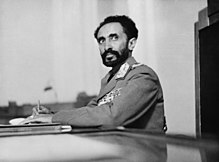
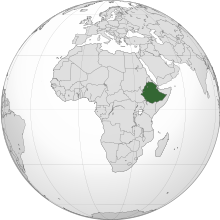
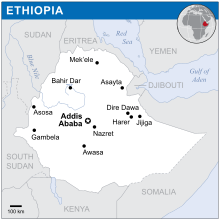
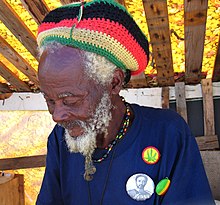
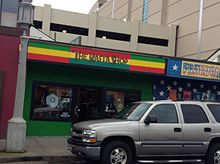
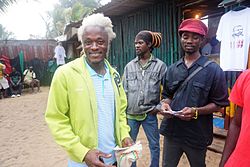
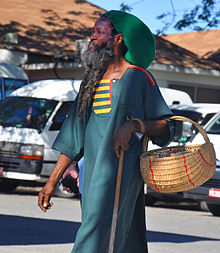
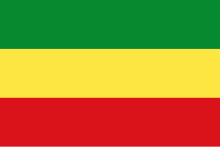



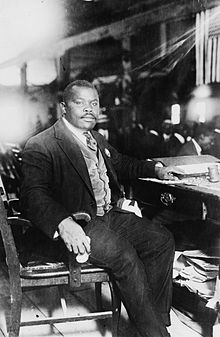
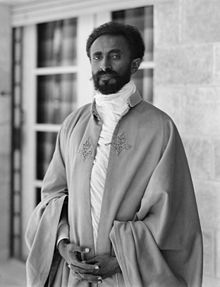

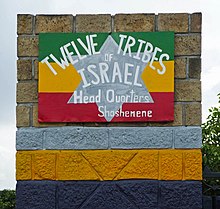

Δεν υπάρχουν σχόλια:
Δημοσίευση σχολίου